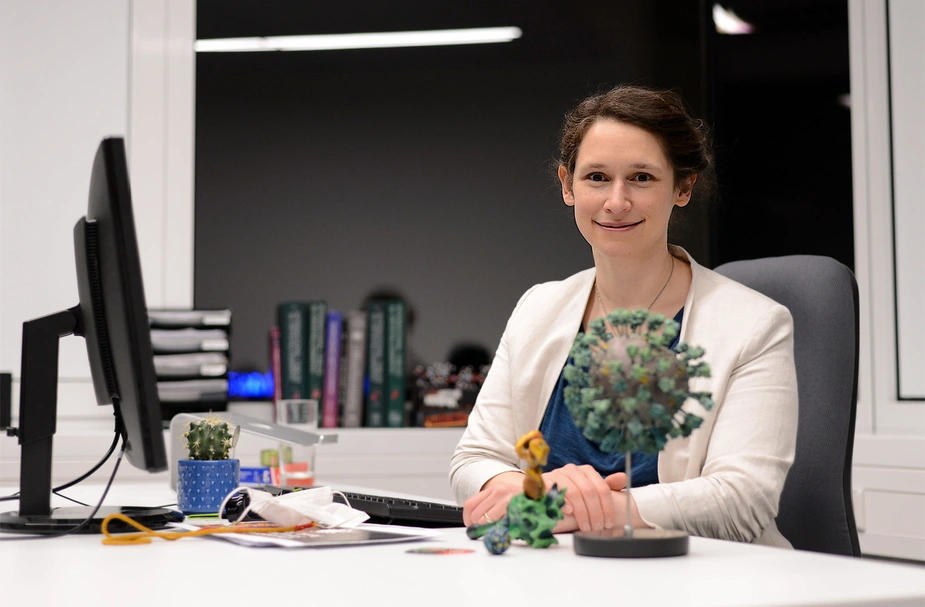New department at HZB: ‘AI and Biomolecular Structures’
Andrea Thorn, head of the department, brings many years of experience in AI-based tools for structural biology
Since 1 July 2025, Dr. Andrea Thorn has been setting up the new AI and Biomolecular Structures department at HZB. A biophysicist with many years of experience in AI-based tools for structural biology, she is looking forward to collaborating closely with the macromolecular crystallography team at the MX beamlines of BESSY II.
Andrea Thorn completed her PhD in the research group of George Sheldrick at the University of Göttingen and then conducted research as a Marie Curie Fellow in Cambridge on the three-dimensional interactions of large molecules such as proteins and DNA and water. She later moved to Oxford, where she developed the AUSPEX software for analysing diffraction data at the Diamond Light Source. Until recently, she led a group at the Centre for Ultrafast Imaging (CUI) in Hamburg.
During the pandemic, Thorn established the Coronavirus Structural Task Force, an international team that reviewed every new molecular structure of the virus and combined information on these structures from around the world. This enabled the group not only to paint a picture of the virus's molecular biology, but also to map the course of infection and to create the most accurate 3D model of the virus. ‘On this basis, I would like to develop a pipeline at HZB that will allow us to do the same for other diseases, such as influenza. We could partially automate what we have done with 27 specialists in two years for coronavirus. Such a pipeline would allow us not only to design better drugs on the computer ('in silico'), but also to create something like ChatGPT for molecules: a neural network that combines information from different sources and presents it in a meaningful way.'
Thorn is considered an expert in the use of AI-based analysis tools for the experimental measurement and quality assurance of three-dimensional molecular structures. Her group is known for both developing software and conducting experimental work in the laboratory. In addition to viruses and crystallography, the group is also active in cryo-electron microscopy, accident analysis and fungal biology.
In the newly established department, they will further develop computational methods to evaluate data from BESSY II and combine it with other information. Thorn places great importance on making AI-generated analysis results understandable and comprehensible (‘explainable AI’). The new ‘AI and Biomolecular Structures’ department is part of the Photon Science division and expands the possibilities of macromolecular crystallography at BESSY II through AI-based methods.
Further information:
- Animation of SARS-CoV-2 entry into human host-cell | youtube.com
- 3D model of the corona virion | insidecorona.net
- Homepage Andrea Thorn | thorn-lab.com
Contact:
Helmholtz-Zentrum Berlin für Materialien und Energie
Department AI and Biomolecular Structures
PS-AIM-office(at)helmholtz-berlin.de
Press release HZB, 7 July 2025
